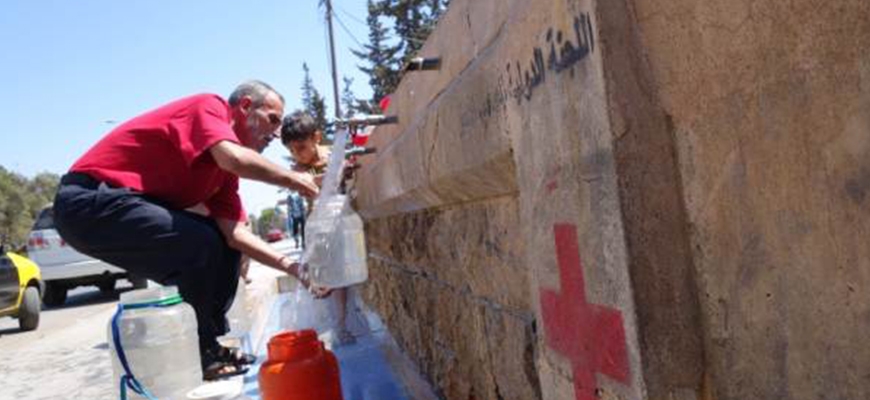
15 Oct 2015
LONDON, Oct 14 (Thomson Reuters Foundation) – Struggling with frequent water cuts, residents of Syria’s battered city of Aleppo have a new way to find the water needed for their daily lives – an interactive map on mobile phones.
The online map, created by the Red Cross and accessible through mobile phones with 3G technology, helps to locate the closest of over 80 water points across the divided city of 2 million and guides them to it using a Global Positioning System (GPS).
“The map is very simple and works on every phone, and everybody now has access to a mobile phone with 3G,” International Committee of the Red Cross (ICRC) spokesman Pawel Krzysiek told the Thomson Reuters Foundation in a phone interview from Damascus on Wednesday.
“The important thing is that it’s not just a map – which many people may not know how to read – it’s the GPS that’s making a difference because people can actually be guided to the water point closest to them,” he said.
Aleppo was Syria’s most populated city and commercial hub before the civil war erupted in 2011, but many areas have been reduced to rubble and the city has been carved up between government forces and various insurgent groups.
Water cuts are a regular occurrence, amounting to about two weeks each month, and the infrastructure is on the brink of collapse, Krzysiek said.
The water supply was restored on Wednesday after a four-day cut caused by damage to the main power line providing electricity to some 80 percent of households, Krzysiek said.
More cuts are likely because fighting is preventing engineers from repairing the power line, and diesel, used for standby generators, may run out, he added.
In September the ICRC said that water in Syria was becoming a weapon of war and called for unconditional access to it.
“But it’s not only about water being used as a weapon of war,” said Krzysiek. “Even the smallest escalation of conflict can have very serious consequences for the civilian population. You can’t live without water.”
Krzysiek said the ICRC started working on the map after a simple version created for engineers was posted on its Facebook page in the summer, sparking a wave of comments and requests.
“Suddenly people started to share this map and were sending comments on how to improve it and asking for a new, more detailed one.”
Krzysiek said that about 140,000 people were using the old version of the map and 20,000 had already used the new version, launched on Monday.

 عربي
عربي